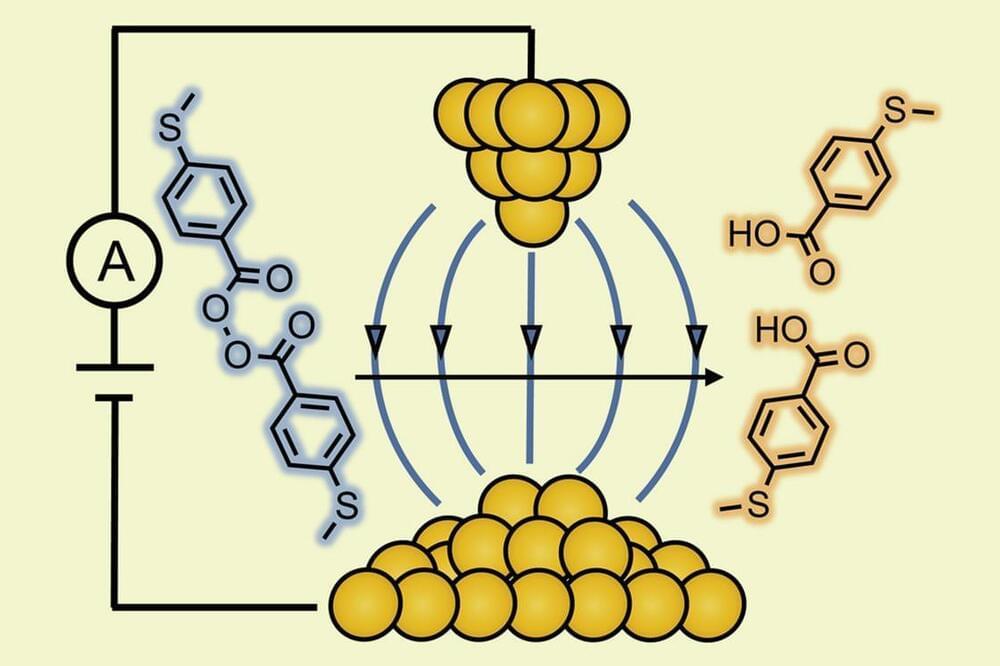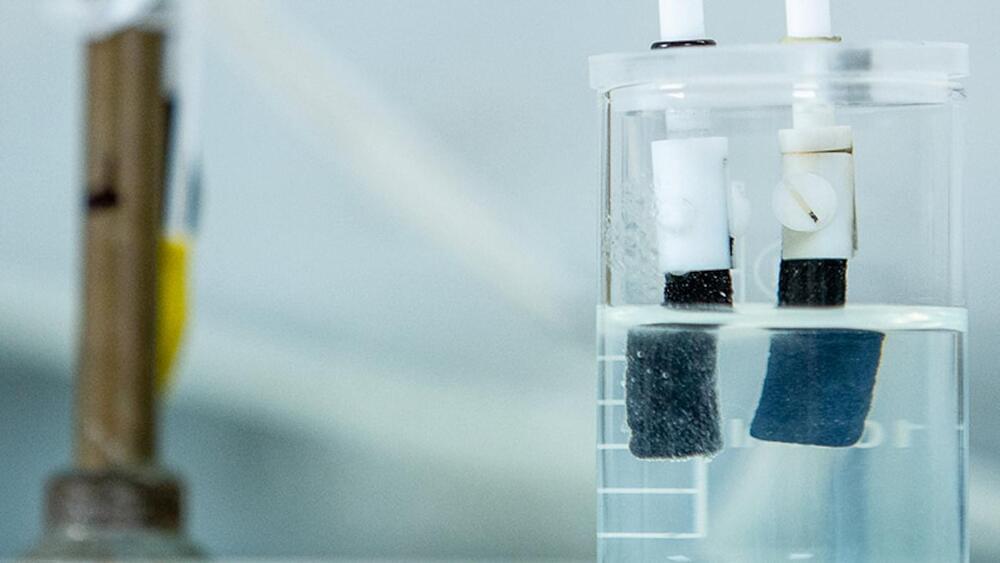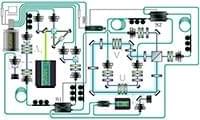Study also uncovers that the reaction rate in a field increases linearly with the solvent dielectric constant.


A ground fault normally occurs in one of two ways: by accidental contact of an energized conductor with normally grounded metal, or as a result of an insulation failure of an energized conductor. When an insulation failure occurs, the energized conductor contacts normally non-current-carrying metal, which is bonded to a part of the equipment-grounding conductor.
In a solidly grounded system, the fault current returns to the source primarily along the equipment-grounding conductors, with a small part using parallel paths such as building steel or piping.
If the ground return impedance were as low as that of the circuit conductors, ground fault currents would be high, and the normal phase-overcurrent protection would clear them with little damage.


Scientists from the National Institute of Allergy and Infectious Diseases (NIAID), part of the National Institutes of Health, have removed a major roadblock to better understanding of mpox (formerly, monkeypox). They developed a mouse model of the disease and used it to demonstrate clear differences in virulence among the major genetic groups (clades) of mpox virus (MPXV).
The research, appearing in Proceedings of the National Academy of Science, was led by Bernard Moss, M.D., Ph.D., chief of the Genetic Engineering Section of NIAID’s Laboratory of Viral Diseases.
Historically, mpox, a disease resembling smallpox, was only occasionally transmitted from rodents to non-human primates or people, and was observed primarily in several African countries. Mpox rarely spread from person to person. That pattern changed in 2022 with an outbreak in which person-to-person mpox transmission occurred in more than 100 locations worldwide.


To further promote Copilot, GitHub is giving it an update, which will bring a set of new capabilities. According to GitHub, this update will benefit both users in the Copilot for Individuals and Copilot for Business plans.
Copilot is an AI-based coding tool that offers autocomplete-style suggestions while the users code. It complements Visual Studio, Neovim, and JetBrains integrated development environments, making code writing easier and faster for developers. In December, GitHub announced its ‘Copilot for Business,’ which costs $19 per user monthly. Aside from the features in the single-license Copilot tier, the business plan includes license management and organization-wide policy management capabilities. This collection of capabilities is now getting an expansion with a new update GitHub is pushing for Copilot for Individuals and Copilot for Business plans.
First of these improvements are the corporate proxy support (including those with self-signed certificates) specifically for Copilot for Business and the better quality of code suggestions in the entire Copilot tool. According to GitHub, the latter is made possible through the upgraded AI Codex model, the new Fill-In-the-Middle paradigm, and a lightweight client-side model.

In quantum mechanics, the unitary nature of time evolution makes it intrinsically reversible, given control over the system in question. Remarkably, there have been several recent demonstrations of protocols for reverting unknown unitaries in scenarios where even the interactions with the target system are unknown. These protocols are limited by their probabilistic nature, raising the fundamental question of whether time-reversal could be performed deterministically. Here we show that quantum physics indeed allows for this by exploiting the non-commuting nature of quantum operators, and demonstrate a recursive protocol for two-level quantum systems with an arbitrarily high probability of success. Using a photonic platform, we achieve an average rewinding fidelity of over 95%. Our protocol, requiring no knowledge of the quantum process to be rewound, is optimal in its running time, and brings quantum rewinding into a regime of practical relevance.
Published by Optica Publishing Group under the terms of the Creative Commons Attribution 4.0 License. Further distribution of this work must maintain attribution to the author(s) and the published article’s title, journal citation, and DOI.

Feb 14 (Reuters) — Tesla chief executive Elon Musk donated shares worth $1.95 billion in the world’s most valuable automaker to charity last year, a filing with the U.S. Securities and Exchange Commission (SEC) showed on Tuesday.
Musk donated about 11.6 million shares between August and December last year, according to the filing, which did not say which organization or organizations were the recipients.
The world’s second-richest person now owns around 13% of Tesla.

So please for Tech news and views from the perspective of building a humane and sustainable economic system, check them all out!
And share them with your friends!
_________________________
Episode 24 discusses:
Ben Zion and Dr. Hale discuss the two most exceptional 21st century projects (beyond those to do with building a humane and sustainable economic system, which should have rightly been achieved in the 20th century) namely Universal Superlongevity and Human-Centered-Artificial-Superintelligence, and the noble work of Ageless Partners in the life extension arena.(continued in ep. 25)
Prof. Ian Hale, the autism author and broadcaster, is a member of the World Academy of Medical Science and Director of Research for Ageless Partners’ radical new rejuvenation project.
He’s an associate of both the Moscow Institute of Science & Technology & the Russian Academy of Science.
I have started uploading them primarily to YouTube, this is a sneak preview, and it will be uploaded there next week–
So please like and subscribe!
DID YOU KNOW THAT YOU CAN ASK A FREE #DIGITAL #WRITING #ASSISTANT (CHATGPT)